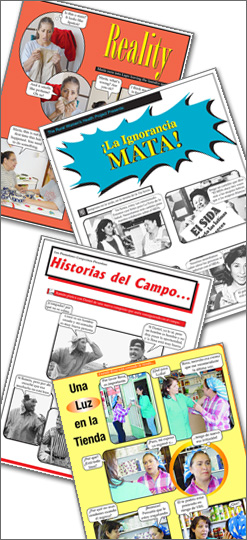What is a Fotonovela
The RWHP Approach

The fotonovela is a traditional print medium found in Mexico, Latin America and the Caribbean. Fotonovela, also known as novelas or novelitas, are similar in format to that of a comic book. However, rather than illustrations, sequential photographs are used accompanied by dialogue bubbles. Fotonovelas typically depict a simple, dramatic story (or soap opera) enveloped in a dramatic plot that contains a moral message.
Initially produced in Italy and Spain, fotonovela were tactile representations of the movie with which they correlated (Carrillo, 1983). The documented history of the fotonovela is varied, although the Hispanic/Latino fotonovela dates back to the early 1940’s in correlation with the rise in the popularity of film.
Eventually, Latin American countries began developing fotonovela that featured original stories that were not based on cinema productions. By the 1960’s, approximately 23 movies were featured in the fotonovela format and nearly three times as many fotonovela with original content were circulating throughout Mexico, Central and South America (Carrillo & Thomas, 1983). Toward the late 1980’s, Mexico was publishing approximately 70 million fotonovelas per month (Herner, 1979). In recent decades fotonovela production has declined, although some classic fotonovelas are being reprinted and new fotonovelas are still in development.





















